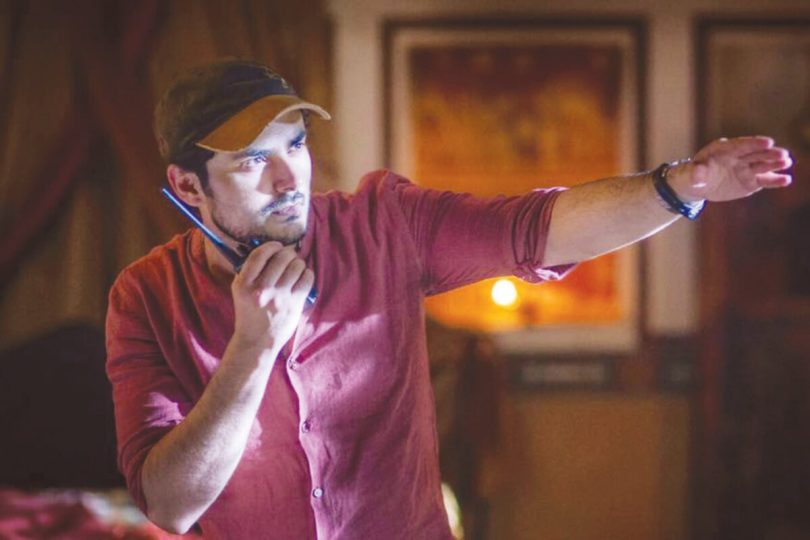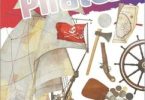Pakistan’s film industry owes a great debt to director Bilal Lashari. His first film Waar kick-started the revival of Pakistan’s film industry back in 2013 and, after nine years, he has raised the bar high once again with The Legend of Maula Jatt. The film has not only broken records across the country but has also become the fastest Pakistani film to cross the Rs. 50 crore mark, a record that might be hard to break.
BOLD had a sit-in with the maverick director where he spoke about the challenges he faced after announcing this passion project, why wasn’t he nervous ahead of the film’s release, and why so much time passed between the announcement and the release of The Legend of Maula Jatt. Here goes:
BOLD: After multiple delays, The Legend of Maula Jatt has finally been released. How do you feel about your passion project which could have made it to the screens earlier, in normal circumstances?
Bilal Lashari: It is very difficult to describe how I feel about the release of The Legend of Maula Jatt. There were so many roadblocks for us that I stopped concerning myself with the release date and just worked on the film, giving it everything I could. Before the Covid pandemic, there were legal issues and when it was finally set for release, the cinemas closed down due to pandemic, and we were forced to wait. During that time, I had thought a lot about the moment when the film would see the light of day, but ahead of the film’s release, I felt neither anxious nor nervous, which was a good thing. In fact, I feel very relaxed now that the film has been released and getting the kind of response, we hoped it would get. I am excited and relieved that this chapter of my life has come full circle, and I can finally move on to other things.

In 1979, Maula Jatt conquered everything from the box office to the audiences’ hearts and minds. How difficult was it to remake a cult classic, that too four decades later?
It was a very difficult task to say the least, not because we were making a big-budget film, but because we were remaking an already successful classic. In such a situation, you have to cater to not one but two different groups of the audience – those who loved the original one, and those who would like the newer version. I don’t want to use the word ‘competing’ here but we were sort of being compared with the original Maula Jatt which was made in another era, for another audience.
Add to that the scale at which we were making the film, and the ensemble cast we had selected, and the expectations automatically increased for everyone from those who loved the original film to those who were waiting for the retelling. To satisfy all kinds of audiences, we had many checkboxes to tick; the dangerous thing in such a situation is that when you try to cater to all kinds of people, the film starts to diffuse into something else. Thankfully, we tried our best to not let that happen otherwise we would have lost both our integrity and identity. After watching the film, people praised our work, which means we were able to overcome our biggest challenge – keeping the two films apart.

A Punjabi film without a song would have been considered a crime in the past, but you were able to pull it off. Was it a conscious decision to exclude songs from the final product or did it just happen?
It was a conscious decision on our part because we wanted our product to come out fresh, and different from the previous film. Since we were following the Western structure of the script, a song would have been a distraction for the viewers. Even without the song, the flow is there, the story is there, and had we inserted a song just for the sake of it, it would have looked forced. The narrative we were building had no need for a song (also, no space too); we would have been rightly criticized had we been making a musically inspired film, but we weren’t. It’s a very intense and engaging film that keeps on building, and a song would have not suited it in any way.

Did you insert the dance sequence to compensate for the lack of song, or was that really necessary?
If you have seen the film, then you know that the dance performance by one of the characters was required at that moment but if you haven’t, you will agree to its placement and requirement after you have seen it. The new actress Saima Baloch is one of the big surprises of the film, and like all the secondary characters have worked very hard on developing her character. I would like to add here that after watching the film, the audience will take back at least 10 characters with them once they exit the theatre and each one will give them something to remember.

Some members of the audience would also take back the action moves, the likes of which haven’t been part of a Pakistani film before. How did you make that happen?
(Laughs) When we released the trailer, many people loved the action scenes we incorporated there but trust me, that was nothing compared to the action we choreographed in the film. In order to have proper action scenes, we hired international stunt coordinators who came to Pakistan and trained the local talent for two months. When we had the action team ready, we shot the sequences and kept the action sequences in tone with the raw, gritty, and realistic acting style of the film. Even though the story takes place in a fantasy world, you will not see the physics-defying fight here because that would have seemed odd.
Yes, there is violence, yes there is blood, and yes there are a lot of action scenes that aren’t suitable for kids, but I haven’t made the film for kids, hence I have no regrets. Unlike the West, which is not open to violence, we are, so when you visit the theatre for The Legend of Maula Jatt, leave your kids at home. Our film targets the younger (teens, to be exact) and the older crowd and they would fully enjoy it when they watch it in cinemas.

The Legend of Maula Jatt is not only the most expensive film ever made in Pakistan, it is also the biggest one in terms of worldwide release. How does it feel to know that people of every country, ethnicity, and language are enjoying a film made in Pakistan, that too in a regional language?
Honestly, we didn’t have many barriers to cross when it came to international release, because films from Pakistan aren’t that regularly released around the world. Since our film was bigger than any other film from Pakistan and was made in a language that is understood in all parts of the world, the market was a little different when compared to Urdu films. In some regions, both the Urdu and Punjabi-speaking folks loved the film, while at home everyone was looking forward to it, ahead of its release.
It might be the most expensive film ever made in Pakistan but the budget is peanuts when compared to foreign films. However, since the Punjabi language spoken in the film is easily understandable, it will open doors to a new market for us. We always believed that the film would bring the people belonging to Indian Punjab, our Punjab, and the Sikh community closer across the world, and despite limited marketing resources, it has become huge thanks to the word of mouth.

You debuted with Waar in 2013, and after nine years came up with your second film. When do you plan to come up with your next venture, considering the gap between the first two films, we might have to wait for the next decade?
(Laughs) It depends on the subject of my next film because frankly while making The Legend of Maula Jatt I had no clue that it would take such a long time to complete. It might seem that we were working for eight to nine years on this film but the truth is that due to legal issues, Covid-19, and other things, a lot of time passed which wasn’t our fault. Is film ko bananay main itna time nahi laga jitna isko shru karne main aur khatam kar k release karne main lag gaya.
I would say it was a game of patience more than anything else but thankfully, the delay gave me extra time to work on the trailer and that helped. As for my next flick, it might either be bigger than The Legend of Maula Jatt or on a smaller scale, something you would call a sukoon wali film. The scope of that film would determine how much time it would take to complete.

You must have noticed the similarities between the fight sequences of Bollywood releases Kalank and Shamshera which were conceptualized after the first trailer of The Legend of Maula Jatt was released.
Since I haven’t seen either film, I have no idea how much inspiration the directors took from our trailer. I can only comment on that once I have watched the aforementioned films, but then, even we are an inspired version of the original Maula Jatt. Anyone can get inspired by anything because the final product is not a blatant copy but a stylized inspiration, which in my opinion is okay. If our film inspired another film, I would like to take it as a compliment.
Finally, the million-dollar question: Should we watch the original Maula Jatt before embarking on a journey to the cinema for your version, or should we watch your film first?
Usually, everyone who likes to watch films must have seen Maula Jatt but if they haven’t, there is no harm in watching it before or after our film. Since our film isn’t a remake of the original film, watching the older one wouldn’t spoil anything for them. I might have said in the past that we are remaking Maula Jatt but during the production, we evolved beyond that, and the final product is a different film, that follows a different story, and the only thing that links the two are the characters, some plot points, and a few dialogues. Everything else is different from the first film and even those who have seen it would consider the newer flick to be a different experience altogether. -Ends







